I’m in our bedroom, packing for a trip to Alaska. In my pocket is an iPhone that takes stunning photos — within its own well-defined limitations. On the bed is a Panasonic Lumix with a wide-angle lens and 30x optical zoom. In its case, with cables, it takes very little space. At the same time: do I really need a second camera?
I think about where we’re going: the expansiveness of it, the epic nature of the landscapes, the shy wildlife. And I think about our upcoming helicopter tour: swooping over the mountains in a tiny red aircraft, skimming treetops before landing on the Mendenhall Glacier.
Though it means juggling two cameras throughout the day, I pack the Lumix.
As we’re docking in Juneau, I have the flat rectangle of my iPhone in my left pocket and the heavier, bulkier Lumix in my right. But the moment the ship is cleared and we’re cleared to disembark, low clouds surge in, blanketing the ragged tops of the mountains. Holland America immediately cancels our scheduled helicopter tour of the Mendenhall Glacier.
Other tourists waste time stomping around the dock and cursing the over-cautiousness of the local pilots, our friend R. sweet-talks his way to the front of line of people competing for the few tours that remain. Before some folks can finish their tantrums, R. gets us booked with the Gastineau Guiding Company, which turns out to the the number one whale watching outfit in Juneau.
“Whale watching!” I think. “Large animals at a distance!” I take my Lumix out of my pocket. I power it on, and, once the stubby little zoom lens protrudes outward, I clean it with a soft cotton cloth. I check the battery. I clear the digital storage card. I picture myself snapping stunning closeups of whales — so close and so clear you can see sunlit droplets of water dangling off their tails like diamonds.
My excitement mounts when I learn Gastineau Guiding uses sleek boats custom-designed for whale watching. The craft rides low on the water (so photos look more dramatic) and features huge windows that swing up (to allow for clearer photos) and down (to keep out the icy wind when the boat is in motion).
But the star of the show is definitely our guide: Chad, a local twenty-something with dark brown hair, dark brown eyes, a square jaw, a solid knowledge of what’s going on, and the casual, “what happens, happens” attitude that makes so many Alaskan Millennials so attractive:
The trip guarantees “You’ll see a whale, or your money back,” and this gets achieved in two ways. Here’s the first:
Granted, it’s a plastic whale. But, hey, it’s a whale, and you do get to see it.
But all further sightings involve real whales, thanks to the way the locals cooperate. When the captain of one craft spots any of the distinctive signs of whale activity — a blow (as in “Thar she blows!”) or a rolling fin or an uplifted tail — he or she radios the others. Ships converge, but laws require captains to maintain a respectful distance from whales and limit the time they spend watching them … so the water never feels crowded, and the experience is more pleasant for everyone involved.
So, before too long, we’re bobbing a few hundred yards from shore, where a single whale is rolling around in the surf. Chad tells us this is a feeding behavior — the rolls stir up the silty bottom, generating clouds of algae-laden debris — and to watch for whale’s mouth to appear.
While friend R. struggles with the puny digital zoom on his iPhone camera, I extend my lens, wait for just the right moment, and, just as the whale lifts a fin from the water, capture this:
I know, I know. Disappointed, I try again. And again. Here’s my best shot:
All I get is a fin. Even then, I’m not too disappointed, because I know we’re moving on to other sites. As we head out into deeper water, sharp-eyed Chad spies a distinctive “blow” — the plumes of air and water that whales produce when they exhale. Chad tells us a story about an afternoon swim during which he was surprised to have a whale blow right next to him.
A wide-eyed woman from our cruise ship squeals at the though. “It must have been magical!”
Chad shrugs. ”It sounds better than it is. What goes up must come down, so suddenly, you’re covered in stinky green algae and whale snot.”
We’re in deeper water, where others have told us a mother and calf have been spotted diving together. Finally, before anyone is prepared for anything, we see it: the classic “tail in the air” shot everyone watches for.
“That’s a dive,” Chad says. “They’ll be down a while, and then be back up. Just keep your eyes open.”
While friend R. pinches and zooms his iPhone camera’s image until the grain almost pops off the screen, I prepare to take a far superior photo with the 20x zoom lens on my Panasonic Lumix. And when the moment comes — and it does come — when the mother once again dives and lifts that massive tail out of the water, with my superior technology, I capture several dozen frames like this one:
Meanwhile, R. gets this:
Chad comforts me. “You know, sometimes it’s not about getting that perfect Facebook post. It can be better to put cameras aside, and just be in the moment.”
For the ride back to Juneau, and, indeed, for the rest of the trip, I resolve to do just that.
And so here I am: Clyde beside me, silver water all around me, the sun peeping through slits in the low gray sky. The engines drone, and the ship bobs lightly on the white-capped sea.
In that moment, I catch a glimpse of something bigger than a whale: the deep satisfaction that comes from being deeply immersed — and deeply grateful for — what’s happening right here, right now.
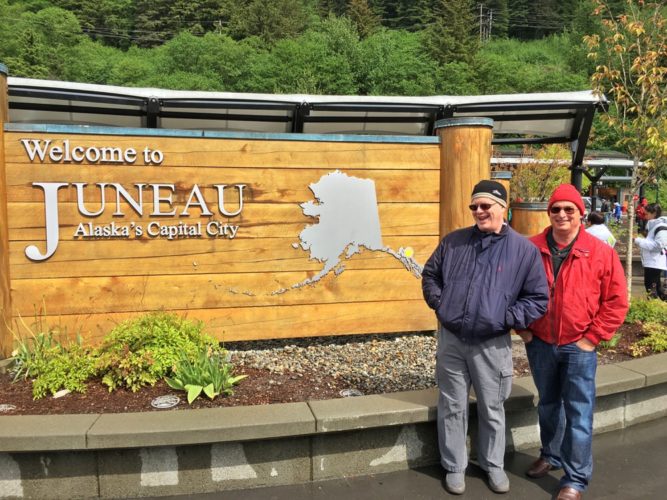
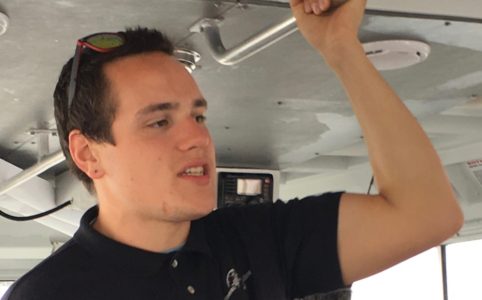
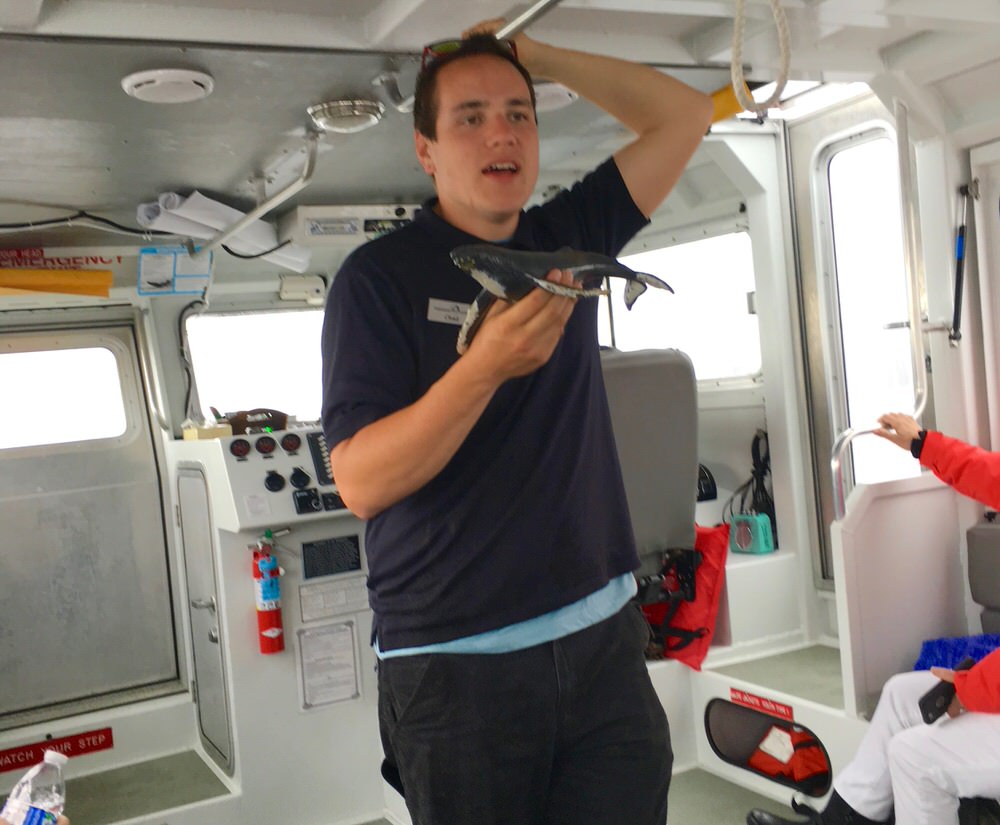
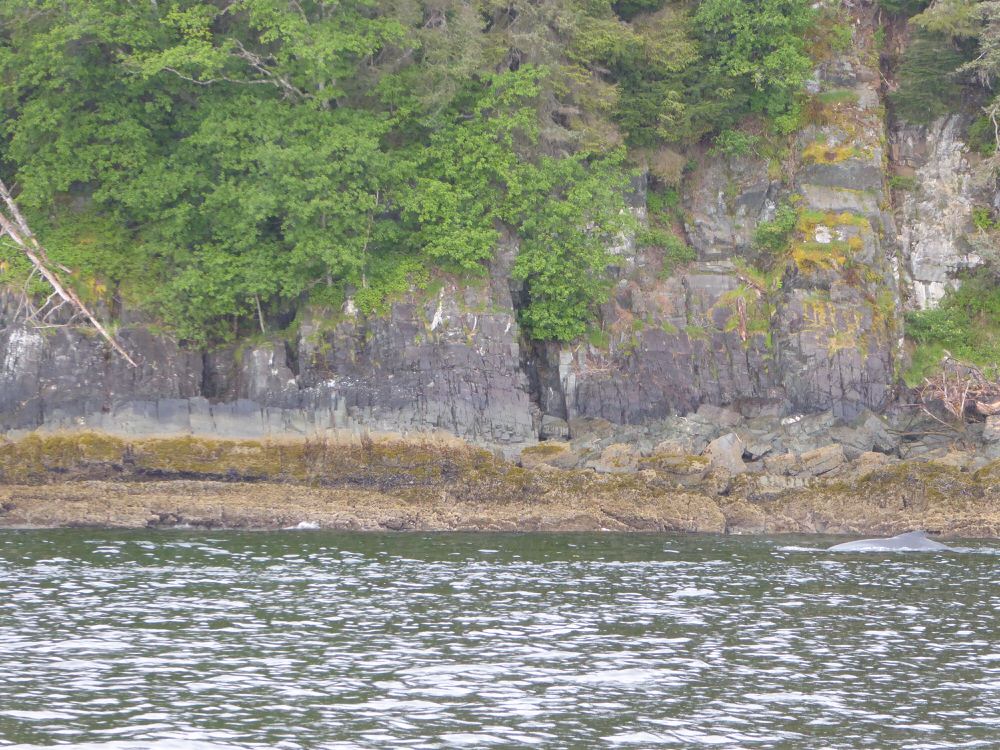
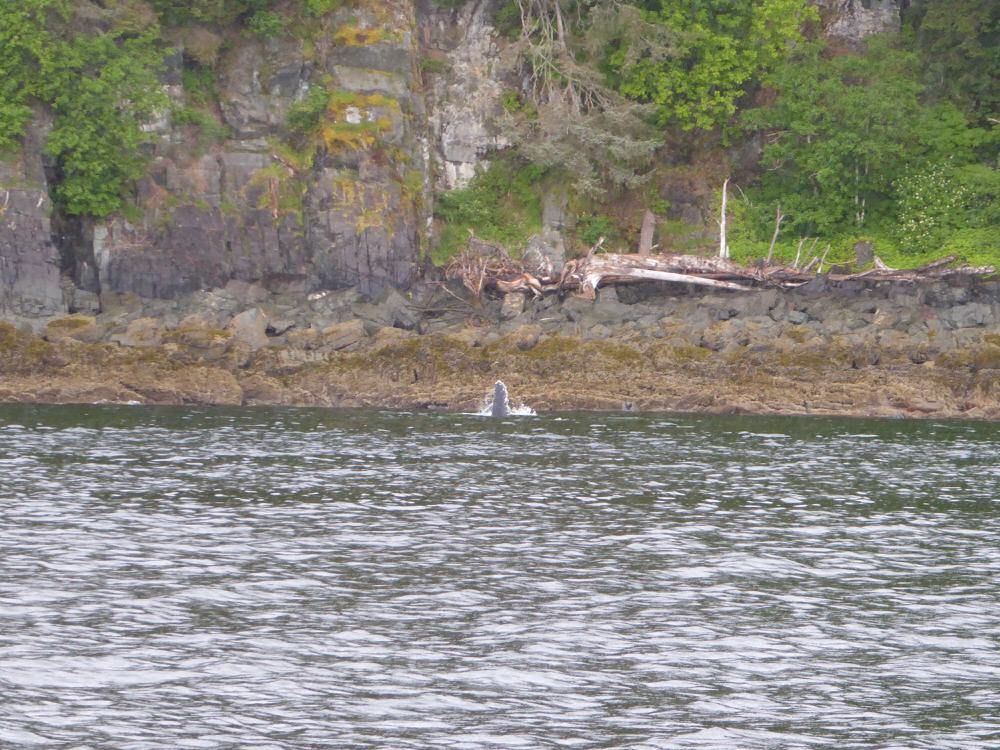
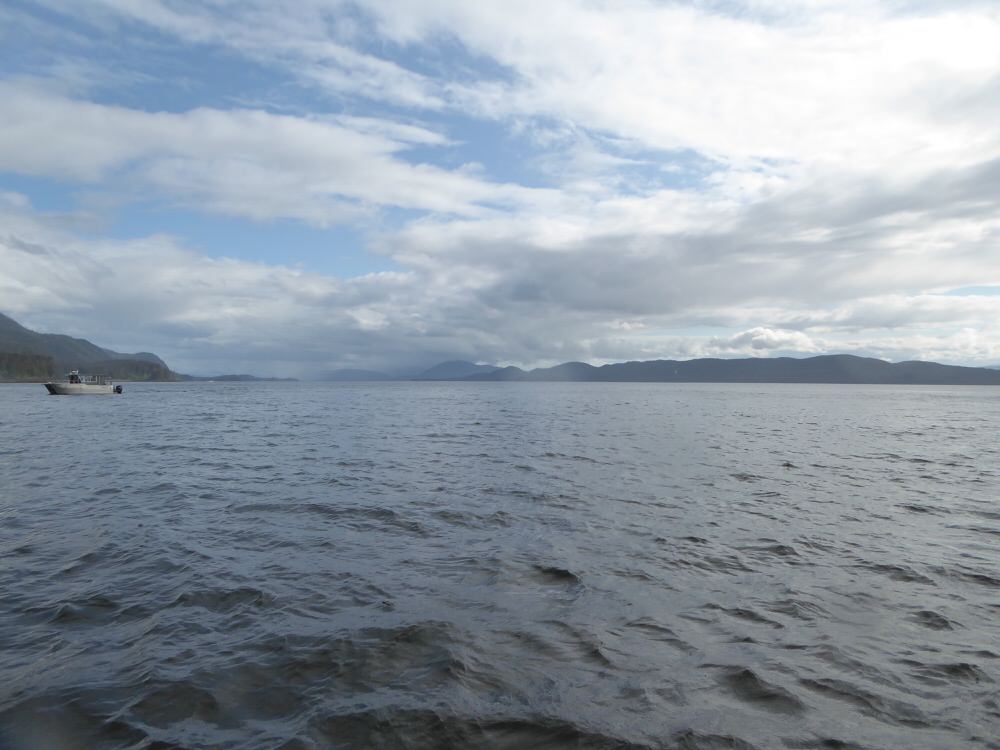
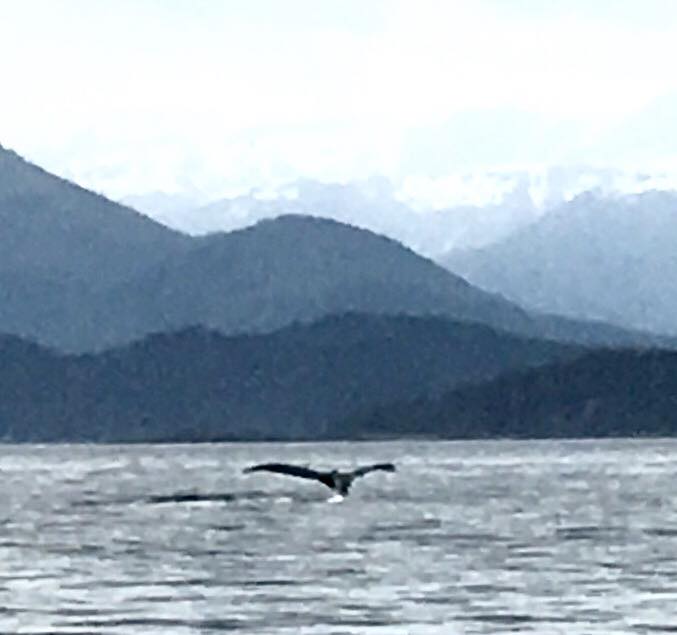
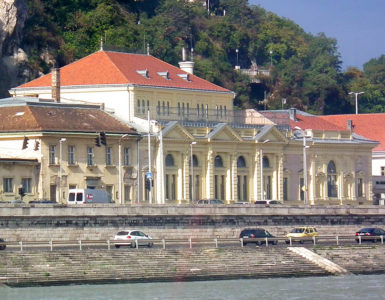


Add comment